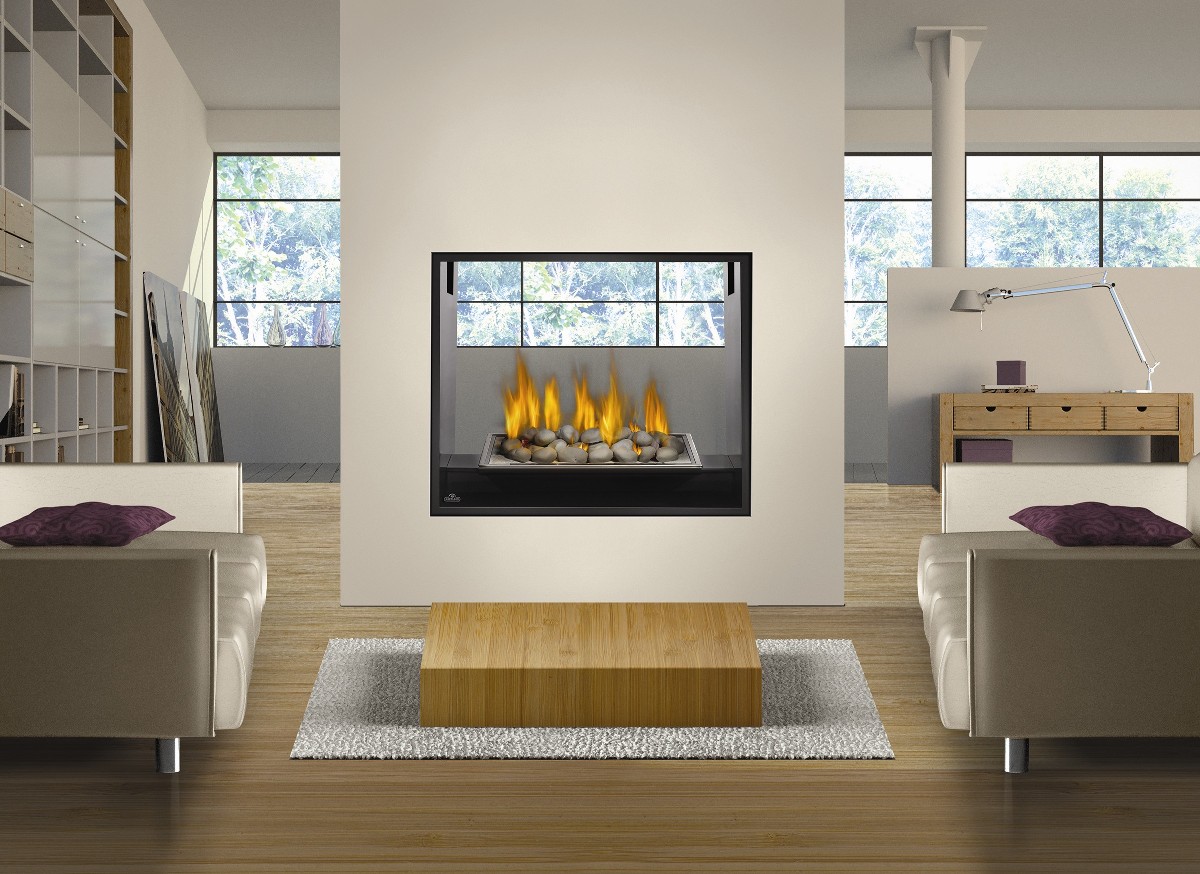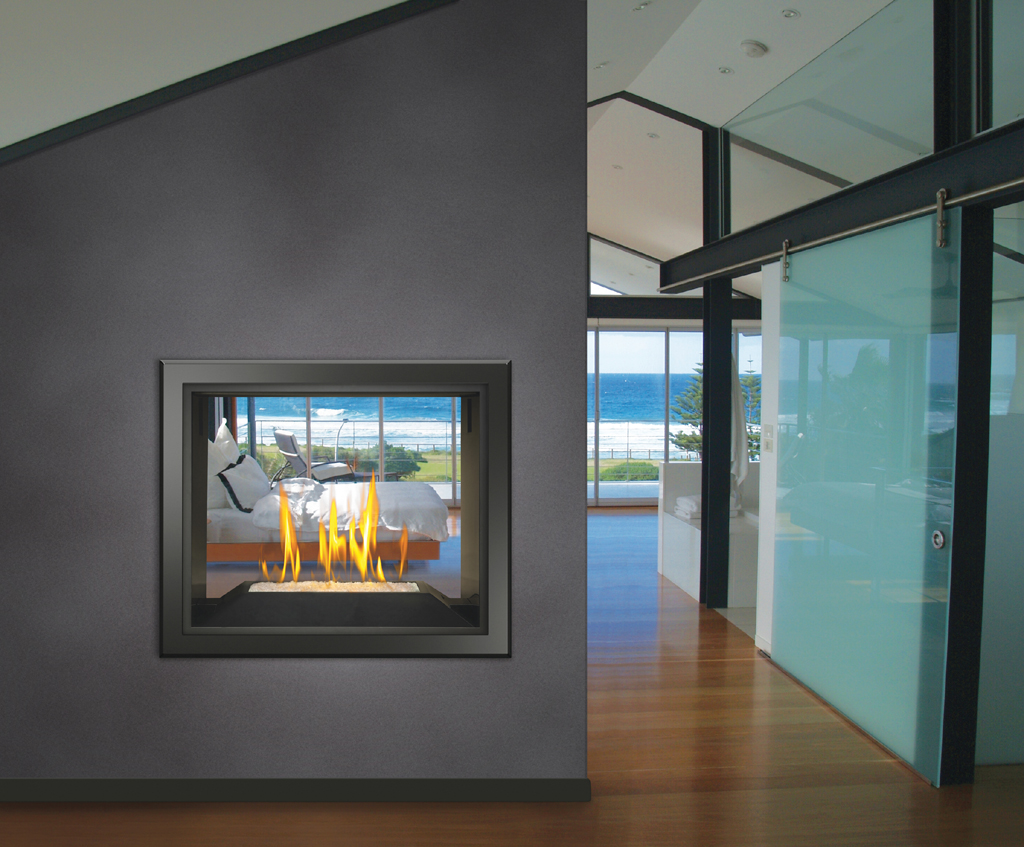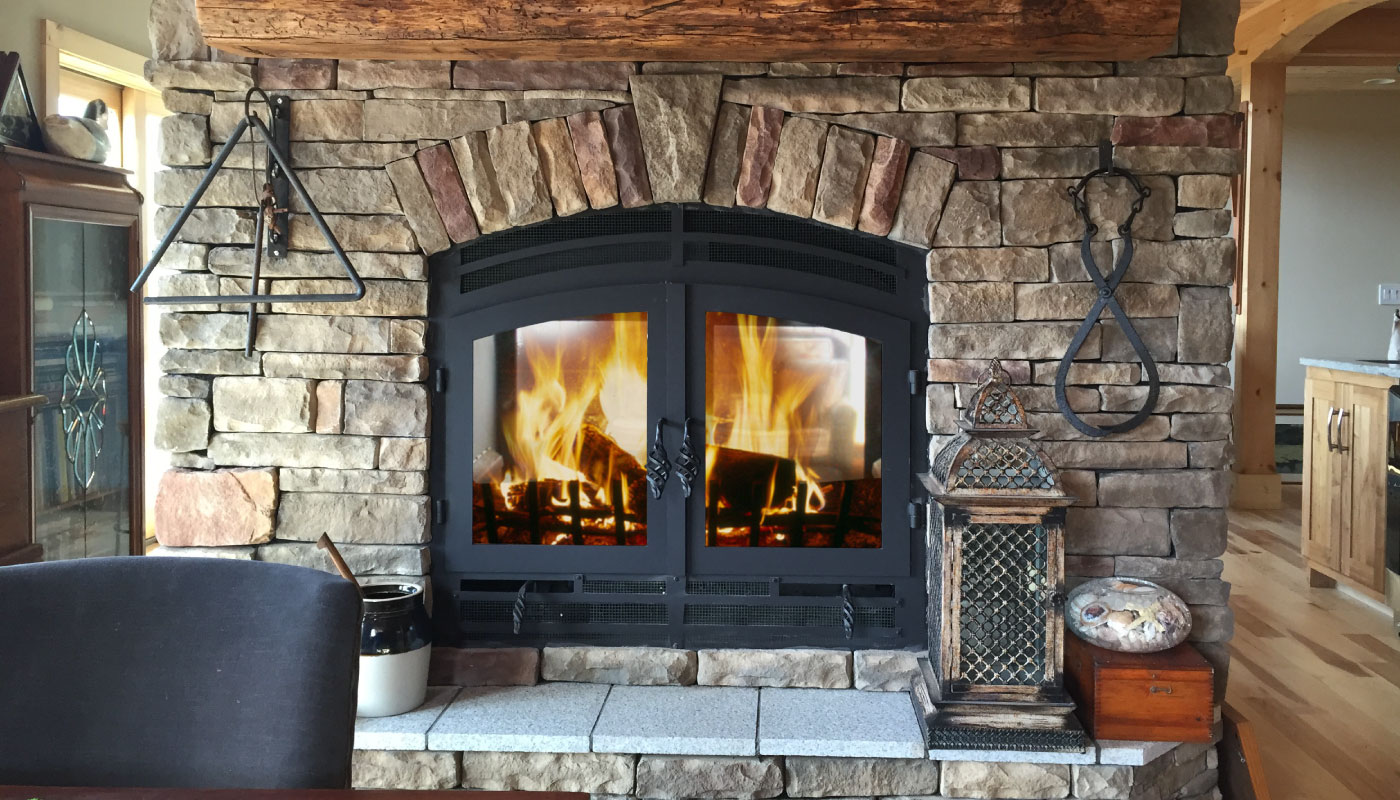Two Sided Gas Fireplace Inserts

Two-sided gas fireplace inserts offer a unique and aesthetically pleasing heating solution, allowing you to enjoy the ambiance and warmth of a fireplace from multiple rooms simultaneously. This article delves into the intricacies of two-sided gas fireplace inserts, covering their functionality, benefits, installation considerations, maintenance, and cost implications for homeowners, HVAC technicians, and facility managers.
Understanding Two-Sided Gas Fireplace Inserts
A two-sided gas fireplace insert is essentially a self-contained heating unit designed to be installed within an existing fireplace opening or as part of a new construction project. Unlike traditional wood-burning fireplaces, these inserts utilize natural gas or propane as fuel, offering a clean, efficient, and convenient heating alternative. The "two-sided" aspect refers to the unit's design, which features a viewing area on both the front and back, enabling you to enjoy the flames and radiant heat from two adjacent rooms.
How They Work: The Technical Aspects
These inserts operate by burning natural gas or propane within a sealed combustion chamber. The heat generated is then distributed through a variety of methods, including:
- Radiant Heat: The primary source of warmth, radiating directly from the glass viewing areas.
- Convection: Some models incorporate a blower fan that circulates heated air from around the firebox into the room(s). This significantly improves heat distribution and efficiency.
- Zone Heating: Two-sided inserts are excellent for zone heating, allowing you to heat specific areas of your home without needing to turn up the central heating system, saving energy and reducing heating costs.
The combustion process vents exhaust gases safely outside through a dedicated venting system, typically using flexible or rigid metal piping that runs through the existing chimney or directly through an exterior wall. Modern inserts are designed with advanced safety features, including automatic shut-off valves and oxygen depletion sensors, to ensure safe and reliable operation.
Benefits of Two-Sided Gas Fireplace Inserts
Choosing a two-sided gas fireplace insert offers a range of advantages over traditional fireplaces and other heating solutions:
- Aesthetic Appeal: They create a stunning focal point, adding visual interest and warmth to two rooms at once. The ability to customize the firebox with different media, such as ceramic logs, glass beads, or stones, enhances the aesthetic flexibility.
- Energy Efficiency: Gas inserts are significantly more energy-efficient than traditional wood-burning fireplaces, with efficiency ratings often exceeding 70% or even 80% for newer models. This translates to lower heating bills and reduced environmental impact.
- Convenience: Unlike wood-burning fireplaces, gas inserts require no wood chopping, hauling, or storage. Operation is simple, often controlled by a remote control or thermostat.
- Cleanliness: Gas inserts produce significantly less smoke, soot, and ash compared to wood-burning fireplaces, resulting in a cleaner indoor environment and reduced maintenance.
- Zone Heating Capability: The ability to efficiently heat specific areas of your home can lead to substantial energy savings.
- Increased Home Value: A well-installed and maintained two-sided gas fireplace insert can increase the value of your property.
Installation Considerations for HVAC Technicians and Homeowners
Proper installation is crucial for the safe and efficient operation of a two-sided gas fireplace insert. Here are some key considerations:
Venting Requirements
Venting is paramount. Direct vent systems are typically preferred for their safety and efficiency. Direct vent systems draw combustion air from outside the home and vent exhaust gases directly outdoors, preventing the introduction of harmful byproducts into the living space. Ensure the venting system meets the manufacturer's specifications and local building codes.
Gas Line Installation
A qualified plumber or HVAC technician must install or extend the gas line to the fireplace opening. The gas line must be properly sized to provide adequate gas pressure for the insert. Leak testing is essential to ensure the integrity of the gas connection.
Framing and Clearances
The fireplace opening must be properly framed to support the weight of the insert and provide adequate clearances to combustible materials. Consult the manufacturer's specifications for specific clearance requirements. Non-combustible materials should be used around the fireplace opening to minimize the risk of fire.
Electrical Connections
Some inserts require electrical connections for features like blowers, remote controls, and electronic ignition systems. Ensure a properly grounded electrical outlet is readily available.
Professional Installation
While some homeowners may be tempted to DIY the installation, it is highly recommended to hire a qualified HVAC technician or certified fireplace installer. This ensures that the installation is performed correctly, safely, and in compliance with local codes. Proper installation also protects the manufacturer's warranty.
Maintenance and Troubleshooting
Regular maintenance is essential to keep your two-sided gas fireplace insert operating efficiently and safely.
- Annual Inspection: Schedule an annual inspection by a qualified HVAC technician. The technician will inspect the venting system, gas line, burner assembly, and safety controls.
- Cleaning: Clean the glass viewing areas regularly to remove soot and buildup. Use a non-abrasive cleaner specifically designed for fireplace glass.
- Burner Cleaning: The burner assembly should be cleaned periodically to remove debris and ensure proper gas flow. This is typically done during the annual inspection.
- Venting Inspection: The venting system should be inspected annually for blockages, leaks, or damage.
- Pilot Light: If the pilot light goes out, follow the manufacturer's instructions for relighting it. If the pilot light repeatedly goes out, contact a qualified technician.
- Troubleshooting: Common problems include pilot light issues, burner malfunctions, and blower problems. Consult the manufacturer's troubleshooting guide or contact a qualified technician for assistance.
Cost Considerations: Purchase, Installation, and Operation
The cost of a two-sided gas fireplace insert can vary depending on the size, features, and brand. Here's a breakdown of the typical costs involved:
- Purchase Price: Expect to pay between $3,000 and $10,000 for the insert itself, depending on the size, features, and brand.
- Installation Costs: Installation costs can range from $1,000 to $5,000, depending on the complexity of the installation and the need for gas line and venting modifications.
- Operating Costs: Operating costs depend on the price of natural gas or propane and the frequency of use. Energy Star certified models offer improved energy efficiency and lower operating costs.
- Maintenance Costs: Annual maintenance costs typically range from $100 to $300, depending on the services performed.
Comparing Two-Sided Gas Fireplace Inserts to Other Heating Options
When considering heating options, it's important to compare two-sided gas fireplace inserts to alternatives such as:
- Traditional Wood-Burning Fireplaces: Gas inserts offer superior energy efficiency, convenience, and cleanliness compared to wood-burning fireplaces.
- Electric Fireplaces: Electric fireplaces are less expensive to purchase but generally provide less heat output and lack the ambiance of a real flame.
- Central Heating Systems: Central heating systems provide whole-house heating, while gas inserts are better suited for zone heating and creating a focal point in specific areas.
- Propane or Natural Gas Stoves: Gas stoves are a good option for supplemental heating but typically lack the aesthetic appeal of a fireplace insert.
Facility Management Considerations
For facility managers overseeing large buildings, two-sided gas fireplace inserts can offer unique benefits in common areas, lobbies, and amenity spaces. However, careful consideration must be given to safety, ventilation, and maintenance requirements. Regular inspections and maintenance are crucial to ensure the safe and efficient operation of the inserts and to prevent potential hazards. It is vital to select models that meet commercial building codes and are designed for high-usage environments. Additionally, consider the placement of the inserts to maximize their aesthetic impact and heating efficiency without compromising safety or accessibility. Clearly posted safety guidelines and regular staff training are also essential components of responsible facility management.
Conclusion
Two-sided gas fireplace inserts offer a compelling combination of aesthetics, efficiency, and convenience. Whether you are a homeowner looking to enhance your living space, an HVAC technician seeking to expand your service offerings, or a facility manager aiming to create a welcoming and comfortable environment, understanding the intricacies of these systems is essential. By carefully considering the installation requirements, maintenance needs, and cost implications, you can make an informed decision and enjoy the warmth and beauty of a two-sided gas fireplace insert for years to come. Remember to always prioritize safety and consult with qualified professionals for installation and maintenance services.










